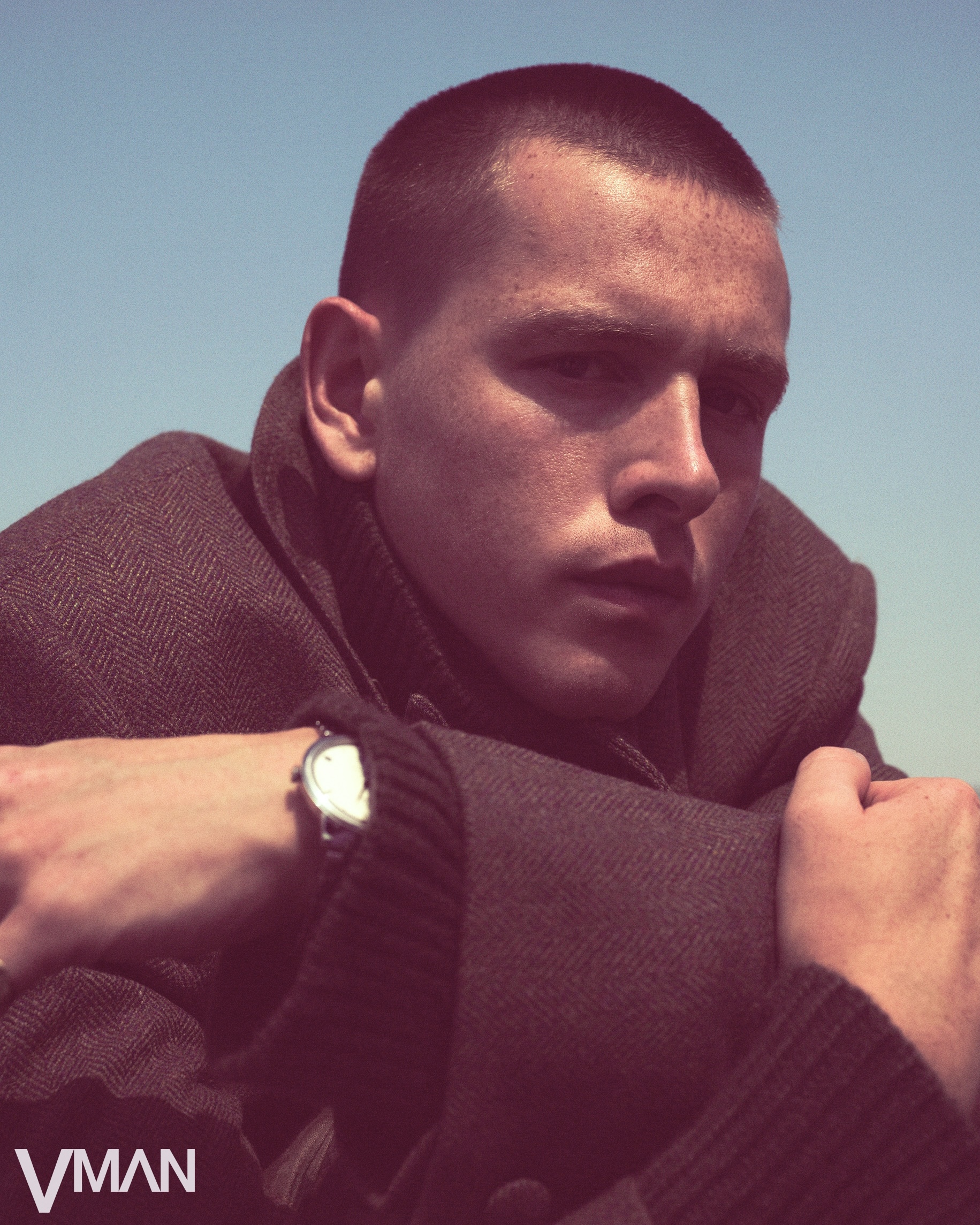It’s rare that an actor gets flown across the world for their first role, and it’s even rarer that they land the lead, but Harris Dickinson is not an ordinary actor. When the East Londoner sent in his self-taped audition for Beach Rats, a 2017 coming-of-age indie film about a young Brooklynite coming to terms with his sexuality, Dickinson was just 19 years old. He had been working as a server and room service attendant at a hotel near his hometown of Leytonstone, and, he admits, had no idea what he was doing or what he was signing up for when he accepted the part. His gentle yet powerful, all-in-the-details delivery in that film set him up as one of the most promising young talents to watch out for, and his work since has far surpassed the public’s expectations.
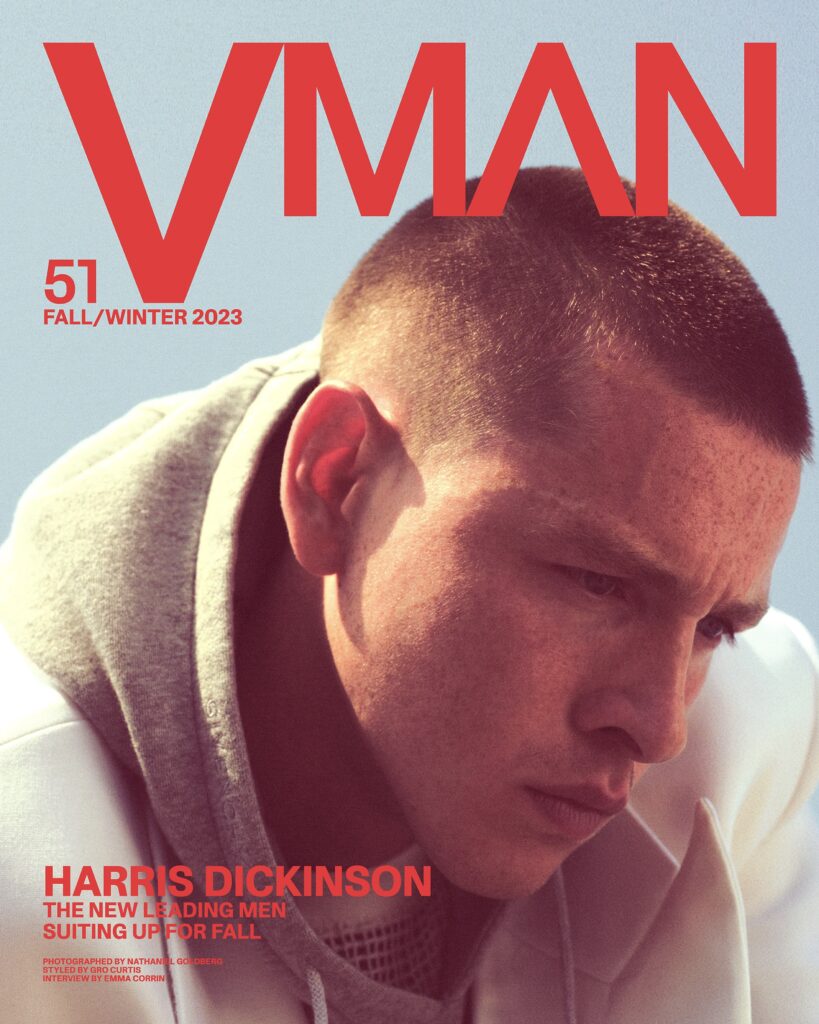
“The environment of a set, with a load of random people, and then sort of having to be vulnerable is a very weird thing for me. It still is, even though I’m been doing it for a minute. It’s an odd place to put yourself in.” —Harris Dickinson
Last year, the now 27-year-old starred in Ruben Östlund’s dark-humored, Palme d’Or-winning satire of wealth and beauty Triangle of Sadness to tremendous critical acclaim. Now, everything seems to be happening for him all at once, as he prepares to launch three films and a miniseries within the next year, including the theatrical release of Scrapper, a kitchen-sink drama—which also happens to be the highly buzzed-about feature debut of 29-year-old British director Charlotte Regan. In the film, which won the Grand Jury Prize when it premiered at the Sundance Film Festival earlier this year, Dickinson takes on the role of Jason, an absent father with the douchey looks of a Slim Shady-era Eminem and the boyish charisma of a young Brad Pitt.
“At the time, I was working in a hotel. I didn’t have much foresight, I was just trying to get a job. I did a self-tape, and for a film of that size—it was a very small film—it was quite a big risk to find someone from London and get them a visa, and I had never done any film work.”—Harris Dickinson
Dickinson sat down with actor Emma Corrin, his costar in yet another one of his hotly anticipated new projects, Murder at the End of the World—a doomsday miniseries from the same brains behind Netflix’s The OA—to discuss the mixture of gratitude and whiplash he’s feeling in the wake of his dizzying rise. It’s taken Dickinson eight years to reach heights that others spend decades scaling, but, as becomes clear in the pair’s conversation, he remains grounded, goofy, and charmingly bashful. As he looks to the future, Dickinson is entertaining the idea of directing and writing—and hinted at a project he’s cooking up in collaboration with Corrin. They got into all of that and more, including acting philosophy, desert sandstorms, and seeing Elton John at this year’s Glastonbury Festival.
HARRIS DICKINSON: He’s great, Elton John.
EMMA CORRIN: He’s absolutely epic.
HD: I cried when I saw him.
EC: Aw, you cried? It’s good to have a little cry…But! We’re not here to talk about Elton John, Harris! We’re here to talk about you.
HD: And you!
EC: Really? Oh, our show… Murder at the End of the World.
HD: I was gonna ask you how many [episodes] you’ve seen.
EC: I’ve seen the first two.
HD: Did you watch them on your own?
EC: No, I watched them with my team. And then I watched one with some friends and my flatmates. It was fun. Everyone likes it, which is good.
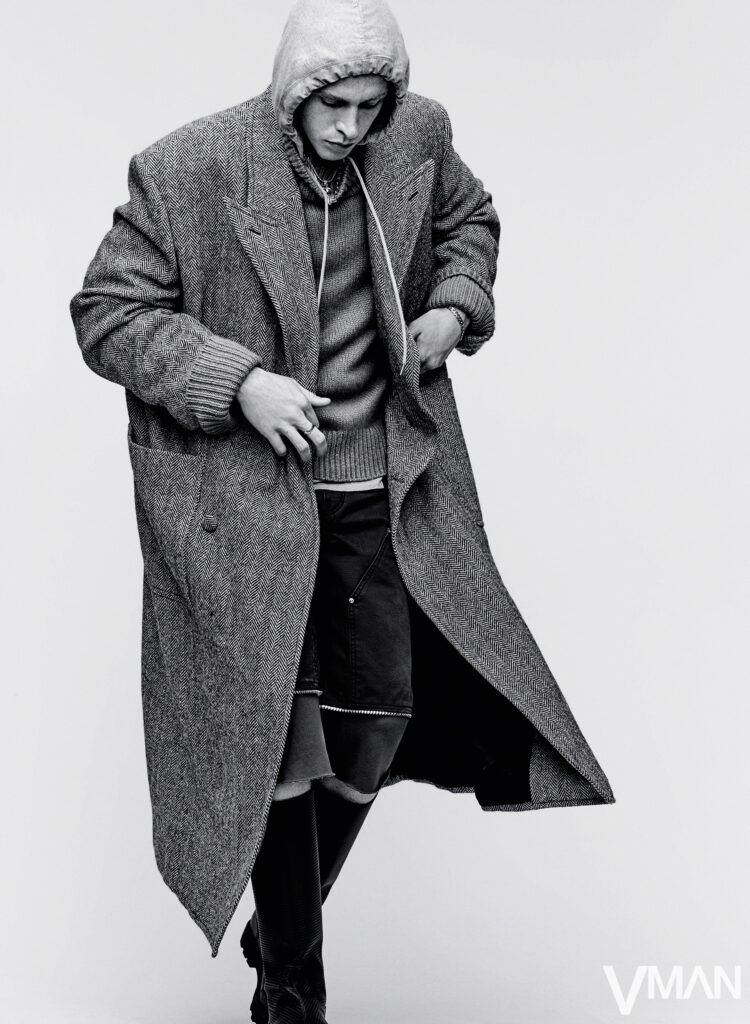
HD: I watched it in an ADR [automated dialogue replacement] room. There was a production assistant in the background, sort of working on their laptop. I felt a little embarrassed that I was there, just me, to watch it on my own.
EC: I feel like the less we say about it, the better.
HD: Agreed. It very much speaks for itself. What made you want to do it?
EC: I remember getting a script when I was doing camera tests for Lady Chatterley’s Lover [Laure de Clermont-Tonnerre’s film adaptation of a D.H. Lawrence novel with the same name]. It was one of those days where they’re figuring out what your wig should be, and you’re in the chair for, like, four hours [laughs]. I hadn’t actually watched The OA before, even though I knew that it had a cult following. That really interested me because I like stuff that’s like Marmite—people really love it, or they don’t. Why did you do it?
HD: Similar reasons. I really liked The OA and thought that those guys, Brit and Zal, have got a really imaginative way of constructing stories. I felt like it was going to be an experience of its own.
EC: It was amazing, though. We went to Iceland, New York, and then Utah. Did you have a favorite location?
HD: I mean, I love New York. It holds a special place for me, but Utah was interesting.
EC: I was fascinated by Utah. You were there the day we were filming in the desert and there was a sandstorm. It was absolutely nuts. Everyone got into the van and we waited it out. You could see on the horizon this tornado sand thing and then it went straight over us.
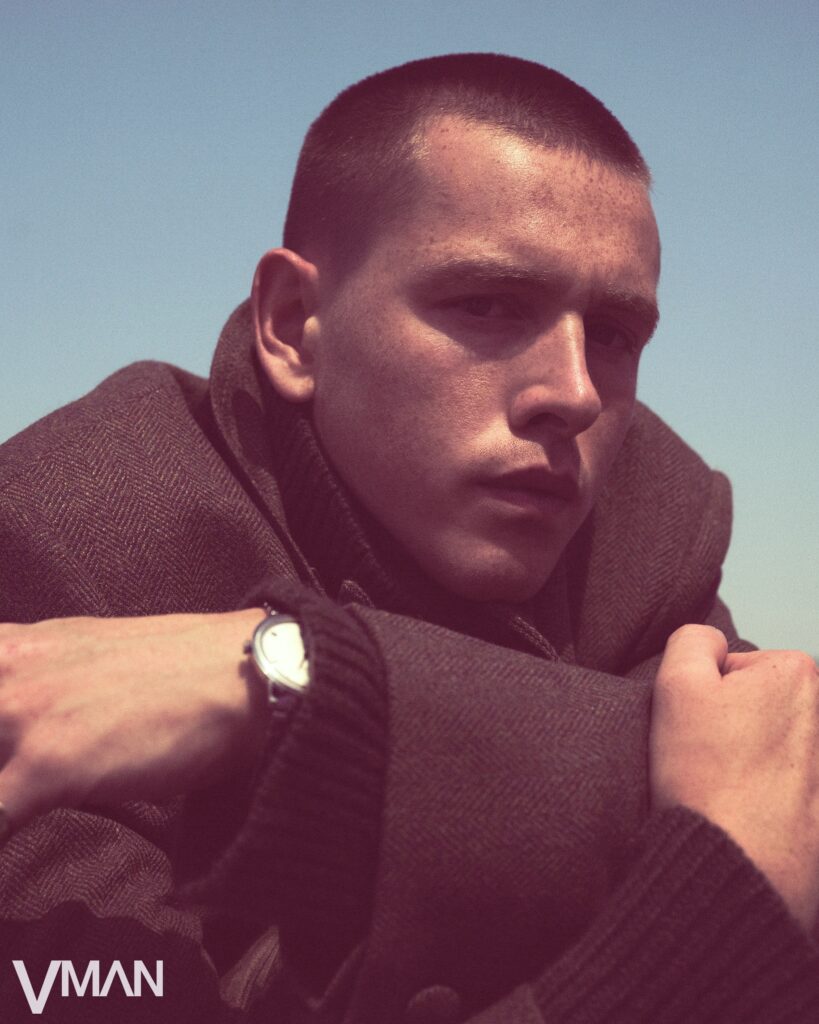
HD: There was a sort of imminent threat to the shoot in that part of it. I kind of liked that though.
EC: Especially because in New York, we were all on stages. Beach Rats, I’m sure, was all exteriors. What made you want to do that?
HD: At the time, I was working in a hotel. I didn’t have much foresight, I was just trying to get a job. I did a self-tape, and for a film of that size—it was a very small film—it was quite a big risk to find someone from London and get them a visa, and I had never done any film work.
EC: That was quite a big leap of faith from Eliza [Hittman, director of Beach Rats].
HD: It was a huge leap of faith.
EC: I remember meeting her and her saying that she didn’t know you were from London because your accent was so good.
HD: That’s very kind, but it took me a while. I observed something that interested me. You seem to possess a great deal of control over your choices, but when we worked together, I noticed that you are very carefree in your approach—I wonder how you prepare? Do you? [Laughs]
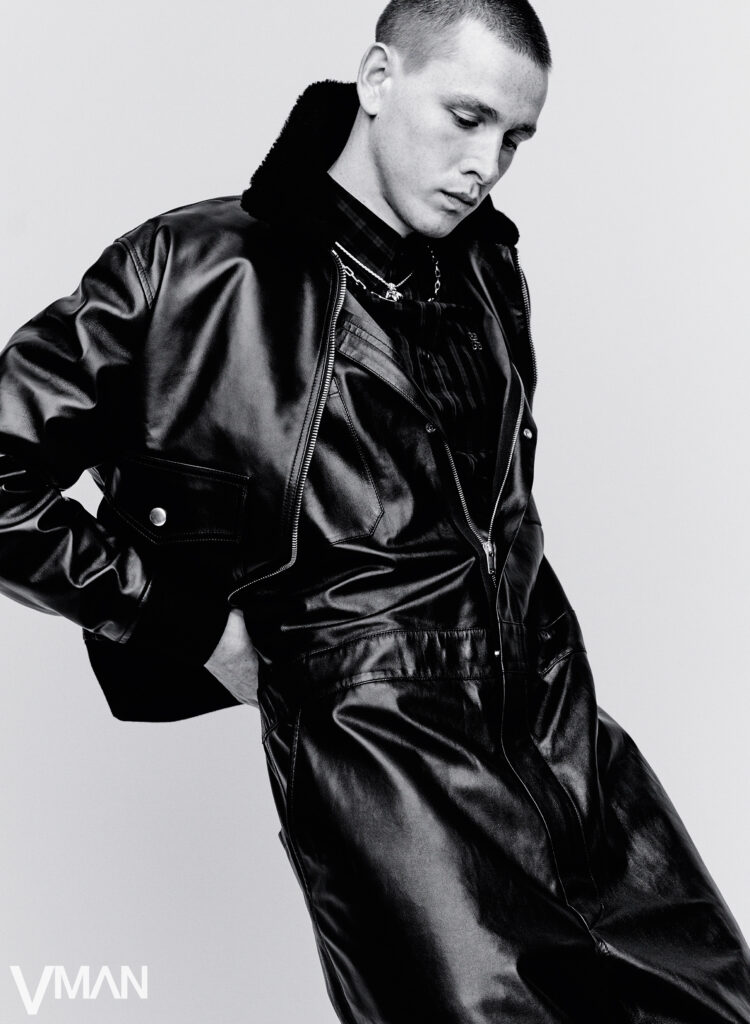
EC: I wish I had this sort of like, “Okay, I’ve got a job. Now, I’m going to start my ritual of preparation.” I’ve tried to do that in the past, like, I’ll get a binder. I’m trying to do it for this project. I bought a Canon printer. I was like, “I’m gonna print out all my references of different films, poems, and bits of writing. I’m going to put them all in a notebook and I’ll be able to, you know, by osmosis, just do it.” I started it, but I just don’t think it’s how I work. Maybe I do the work because I’m drawn to the character. I think I like playing, rather than over-preparing.
HD: There was a recklessness to the way you work, which I loved.
EC: I found that over-preparing has really gotten me in my head. How did you find working with Ruben in Triangle of Sadness? What kind of creative energy was that?
HD: In terms of actual experiences on set, I’d say it’s one of the best I’ve had.
EC: What do you think made it that?
HD: It felt like we were all being pushed to our limit each day. We had time to do a lot of takes. I loved it because it meant that we didn’t have that feeling you sometimes get when you’re on set, and you do two or three takes, and they say, “Great, we’ve got it, let’s move on,” and then like an hour later, you’re like, hang on a minute!
EC: It’s comforting to know when you’re working with someone, that even if you do 31 takes, they’re not going to stop until they’re happy.
HD: I found it invigorating and challenging. I was never bored. I was always energized by the end of each day. It made me excited about the process, about film. Sometimes it can be quite slow, and you don’t feel like you’re doing enough to warrant a day’s work.
EC: That’s amazing. Someone who is pushing you and inspiring you at the same time. It’s a good sweet spot.
HD: Yeah! I remember working with Joanna Hogg on The Souvenir [A24 film released in 2021], the second one. There was this element of secrecy and fear involved. That kind of terrified me because I hadn’t been sent a script and Joanna didn’t allow me to meet Honor, who was the lead character, until the moment I got on set.
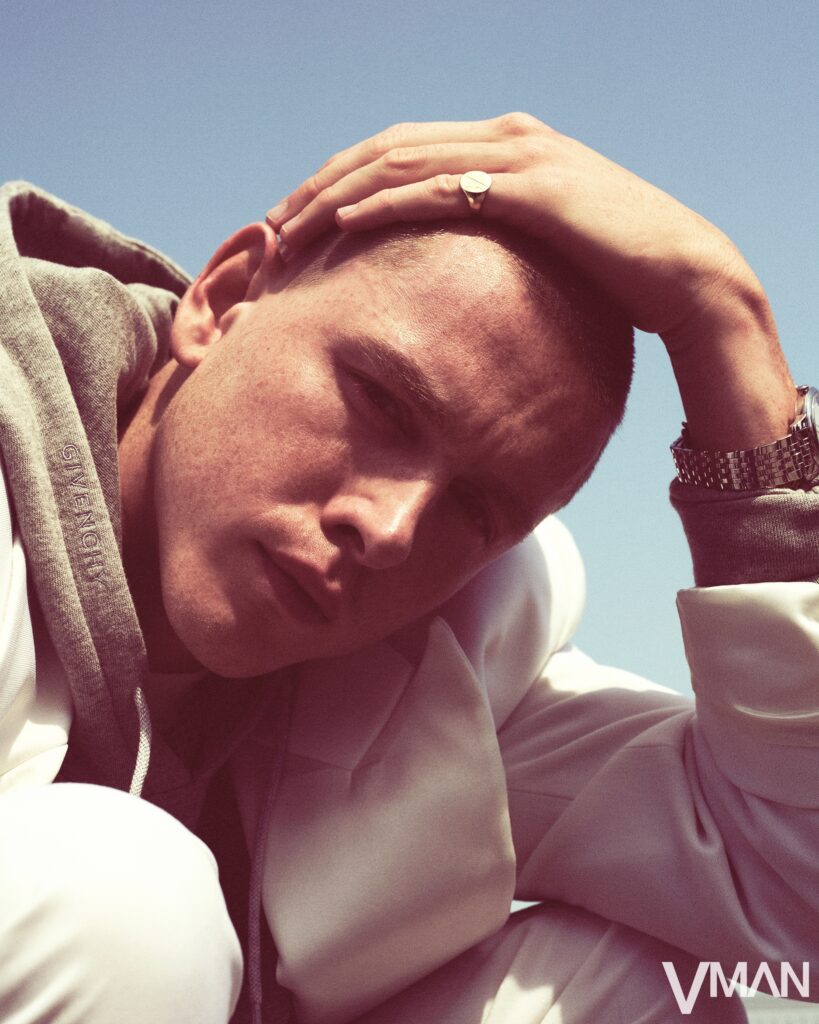
EC: Woah.
HD: I felt like a kid at a new school that was being isolated from his mates. It was very frightening, but then you get there and you start to find things. I find the best experiences are the ones where there’s trust, and you feel comfortable enough to go to certain places. That doesn’t always happen.
EC: Doesn’t always happen.
HD: The environment of a set, with a load of random people, and then sort of having to be vulnerable is a very weird thing for me. It still is, even though I’ve been doing it for a minute. It’s an odd place to put yourself in. When we had a lot of our scenes together, I feel like our personal humor almost threatened to derail the sincerity of the situations that our characters were in.
EC: There was that take in Iceland with the door. I just had to walk out the door and see you, and I couldn’t keep a straight face to save my life. They kind of entertained it for about like three takes and then even on the seventh tape, we fucked up.
HD: That’s when they were like, “It’s not funny anymore, guys.”
EC: They were like, “You need to pull it together,” but obviously, that just makes it worse.
A note from the editors of VMAN: The interviews, photography, and video in this cover story predated the SAG-AFTRA strike.
This cover story appears in the pages of VMAN 51: now available for purchase!
Photography Nathaniel Goldberg
Fashion Gro Curtis
Creative Director / Editor-In-Chief Stephen Gan
Grooming Mary-Jane Gotidoc using SUQQU and Hair By Sam McKnight
Producer Michaël Lacomblez (Louis2)
Production manager Ambre Silvestre (Louis2)
Digital technician Sarah Reimann (Imagin Productions)
Photo assistants Aurélien Nobécourt, Sebastian McCluskey
Stylist assistant Jadzia Scott
Location Big Sky Studios
Discover More






